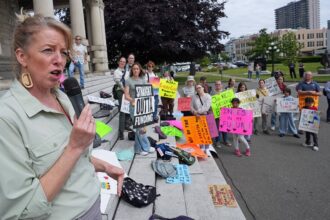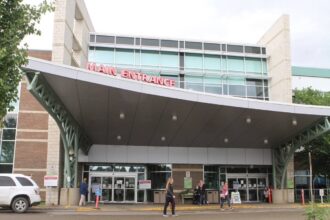The Assembly of First Nations has initiated groundbreaking discussions with Vatican officials regarding the return of sacred Indigenous artifacts and cultural items held within the Vatican’s extensive collections. These preliminary talks mark a significant step in addressing historical injustices and supporting Indigenous cultural reclamation efforts across Canada.
“These artifacts aren’t merely museum pieces—they represent our spiritual heritage, our ancestors’ wisdom, and our communities’ living cultural practices,” said National Chief Cindy Woodhouse Nepinak during yesterday’s press conference in Ottawa. “Their return is fundamental to healing and reconciliation.”
The Vatican Museums house thousands of Indigenous artifacts from around the world, including ceremonial masks, wampum belts, medicine bundles, and other sacred items from First Nations communities across what is now Canada. Many of these objects were acquired during missionary activities spanning centuries, often through questionable means during eras of colonial expansion and religious conversion efforts.
This initiative follows similar repatriation efforts globally, including the landmark 2021 return of sacred items to Siksika Nation from the Whyte Museum in Banff. Historical precedent suggests successful repatriations can provide profound spiritual and cultural reconnection for Indigenous communities, particularly for younger generations seeking to strengthen ties to traditional practices.
Negotiating teams face complex challenges, including determining rightful ownership, establishing appropriate conservation protocols, and navigating international cultural property laws. The Vatican’s own procedures for deaccessioning items from its collections present additional procedural hurdles that must be addressed.
“We’re encouraged by the Vatican’s willingness to engage in these discussions,” noted Dr. Sarah Thompson, Indigenous cultural heritage specialist at the University of Toronto. “Pope Francis’s 2022 apology for the Church’s role in residential schools created momentum for tangible actions like repatriation.”
The AFN has established a specialized committee of Elders, knowledge keepers, and legal experts to identify priority items and develop protocols for their potential return and ceremonial reintegration into community practices. This committee is currently documenting oral histories related to specific items and gathering traditional knowledge about proper handling practices.
These repatriation discussions align with broader Indigenous reconciliation efforts following the Truth and Reconciliation Commission’s calls to action, which specifically addressed the importance of returning cultural property to Indigenous peoples.
The economic implications extend beyond cultural significance. Tourism experts note that Indigenous cultural centers housing repatriated items could generate sustainable economic development for communities while promoting cultural education and preservation.
Several First Nations communities have already begun preparing appropriate facilities and cultural protocols for receiving sacred items, should negotiations prove successful. Modern conservation techniques have made it increasingly possible to maintain delicate artifacts in community-based settings that honor traditional care practices while meeting international preservation standards.
As these discussions continue behind closed doors, many Canadian political leaders have expressed support for the initiative while emphasizing the importance of allowing Indigenous-led processes to guide repatriation efforts without undue government interference.
As we witness this potential turning point in cultural restitution efforts, one question remains at the forefront: How might the return of these sacred items transform our collective understanding of reconciliation from symbolic gestures to tangible actions that restore cultural autonomy to Indigenous peoples?







